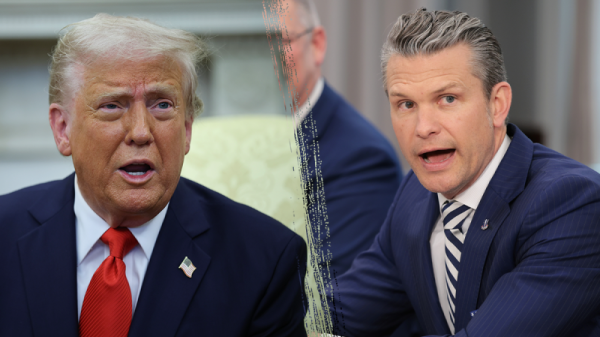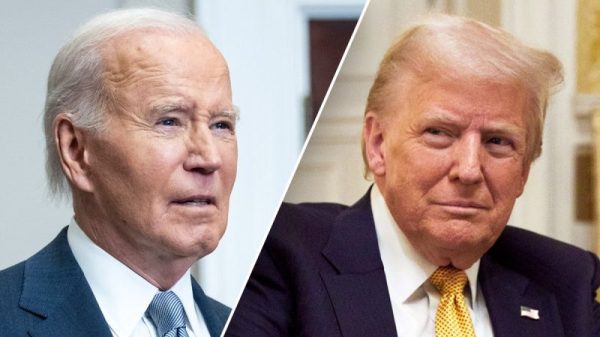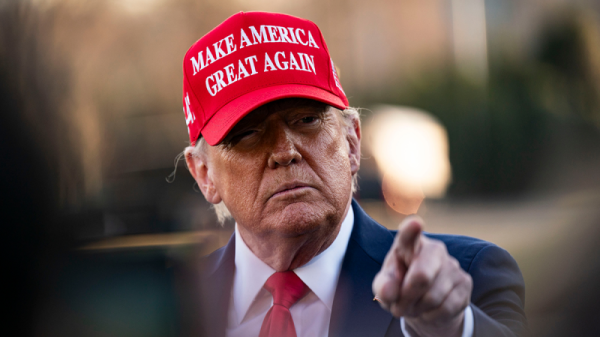Romina Boccia and Dominik Lett
Today, the House Budget Committee, led by Chairman Jodey Arrington (R‑TX), is marking up a budget resolution for fiscal year 2025, released just yesterday. This latest fiscal framework, which sets priorities for federal spending and revenue, arrives directly on the heels of the Senate’s rival budget resolution, which we reviewed earlier this week. Compared to the Senate’s disappointing shell game, the House resolution offers a more responsible budget plan, laying the groundwork for $1.5 trillion in 10-year mandatory spending cuts and capping revenue losses at $4.5 trillion. Given political constraints, that’s a commendable achievement and a clear improvement over the Senate’s blueprint.
However, the resolution falls well short of a deficit-neutral reconciliation framework that House Republicans have explicitly promised to uphold. Per the Committee for a Responsible Federal Budget, the House’s budget resolution would allow $3.3 trillion in higher 10-year deficits or up to $4 trillion in new borrowing, including interest. For context, Congress needed to find $9 trillion in net 10-year savings to stabilize the debt, meaning the current resolution is about $12 trillion off the mark.
While the House budget resolution claims $2.6 trillion in savings from economic growth, these projections are extremely optimistic. As the Manhattan Institute’s Jessica Riedl has pointed out, it is reckless to assume that sustained 3 percent growth rates will materialize from temporary, non-offset tax cuts, especially since past tax cuts have typically led to only short-lived growth boosts. In addition, the resolution makes a nonbinding policy statement targeting $2 trillion in mandatory spending cuts. Without enforceable measures, these savings remain uncertain. Meanwhile, the budget calls for $300 billion in increased defense, border security, and immigration enforcement spending.
The United States needs a bold fiscal reset to curb the nation’s unsustainable debt growth, not a gimmicky budget resolution that pushes the national debt even higher. Congress should do better.
Cato Scholars Offer Perspectives on the House Budget Resolution
We spoke to fellow Cato scholars on the House budget resolution’s approach to several key issues, including tax reform, national defense, energy production, and border security. Here’s what they had to say.
House budget resolution offers a path forward on pro-growth tax reform, despite flaws. As Adam Michel, Cato’s director of tax policy studies, explains:
The House budget resolution takes a comprehensive approach to meet the Republicans’ priorities. On tax policy, it provides the Ways and Means Committee a $4.5 trillion allowance to reduce revenue. This is more than enough room for Republicans to pursue a pro-growth tax bill that makes the most important tax cuts permanent. The resolution imposes a modest requirement on Ways and Means to cut a small fraction of the trillions of dollars in loopholes and other spending in the tax code. It should pursue deeper tax expenditure reforms than the resolution requires.
The budget resolution avoids relying on the novel current policy baseline and includes an important statement, requiring Ways and Means to pursue additional deficit reduction if other Committees do not meet the target of reducing mandatory spending by $2 trillion. The Committee should make this requirement binding.
Instead of reducing spending to offset the entire tax cut, the House plan relies on an overly optimistic $2.6 trillion in higher revenues from assumed faster economic growth. To help meet this aspirational goal, a well-designed tax package that includes permanent business tax cuts, like President Trump’s 15 percent corporate tax rate, full expensing for equipment, and full deductions for structures, will be necessary. Regulatory reform will also help. However, the Committee’s growth target is all but impossible under the President’s threatened and imposed tariffs, foreign retaliation, and immigration restrictions. Spending cuts, not assumed future growth, are the only way to shrink the federal government’s burden on American taxpayers.
On defense, the House budget framework provides an unwarranted increase in defense spending. As Justin Logan, Cato’s director of defense and foreign policy studies, told us Tuesday, the Senate proposal “reads like a Dick Cheney fever dream.” Unfortunately, the House’s budget resolution is more of the same, significantly increasing defense spending compared to prior years. One important difference is that the House budget allows the Committee on Armed Services to submit up to $100 billion in deficit-increasing changes. The Senate framework boosts that deficit increase to $150 billion. In both cases, the defense plus-ups are unwarranted, adding billions more to already absurdly high trillion-dollar deficits.
On energy, the House budget scales back costly subsidies and corrects distortions. As Travis Fisher, Cato’s director of energy and environmental policy studies, and Joshua Loucks, research associate, explain:
While specific details remain uncertain, we are optimistic that the resolution includes provisions to roll back green energy subsidies—particularly the Inflation Reduction Act’s energy provisions, which have distorted energy markets and fueled wasteful spending.
Crucially, the budget avoids reliance on a current policy baseline, preventing the entrenchment of existing energy tax credits. This safeguard is essential to halting the continued expansion of costly subsidies. The $880 billion in spending reductions across the Energy and Commerce Committee and the Natural Resources Committee signal a promising step toward limiting government interference in energy markets and restoring market-driven principles to the sector.
On immigration, the House budget provides a poorly thought-out border security spending increase. As David Bier, Cato’s director of immigration studies, explained earlier this week, “The administration has spent its early weeks mostly arresting immigrants without criminal records and stripping immigrants of their legal status.” Both the House and Senate budget resolutions ignore the country’s “outdated and failing legal immigration system—the true source of illegal immigration.” As with defense, it’s worth noting that the House budget resolution authorizes a lower total deficit increase to the Homeland Security Committee and Judiciary Committee, as compared to the Senate budget resolution.
A Step in the Right Direction
While the current budget resolution leaves much to be desired, it is undoubtedly a better first salvo than the Senate’s budget proposal, which featured unambitious, vague spending cuts and relied on a flawed current policy baseline (budgeting under the assumption that current tax policy will continue indefinitely rather than expire as required by statute). House Budget Committee Chairman Arrington should be applauded for his efforts to include real spending restraint to offset tax cut extensions. Disappointingly, it seems like many Republicans were not ready to make the tough choices necessary to put America on the right fiscal track and fully offset tax extensions. With the House Budget Committee beginning its markup today, it’s not too late to course correct and pursue deeper deficit reductions.
Along with slashing tax expenditures, legislators should push for a more ambitious spending cut target. Only two months ago, Speaker Mike Johnson made a promise to fellow Republicans to raise the debt limit by $1.5 trillion in exchange for $2.5 trillion in spending cuts. As it stands, the budget resolution falls $1 trillion short of the promised cuts while also proposing to increase the debt limit by $4 trillion.
There is no shortage of overdue spending reforms that Republicans can draw on to, at a minimum, close that $1 trillion gap. Converting Medicaid to a block grant program and capping its growth, for example, could save $600 billion over 10 years. Other ideas being floated, such as beefing up work requirements for welfare programs, have their own fiscal merits, with savings in the hundreds of billions.
Ultimately, legislators must recognize that ambitious spending reform is not only politically viable but essential for long-term economic stability. Inflation played a huge role in Republicans getting into office. If they want to win again in 2026, they should get serious about slowing inflation and sparking growth. That means pursuing a disciplined fiscal policy to reduce inflationary pressures and restore market confidence, starting with a deficit-neutral budget resolution.


















